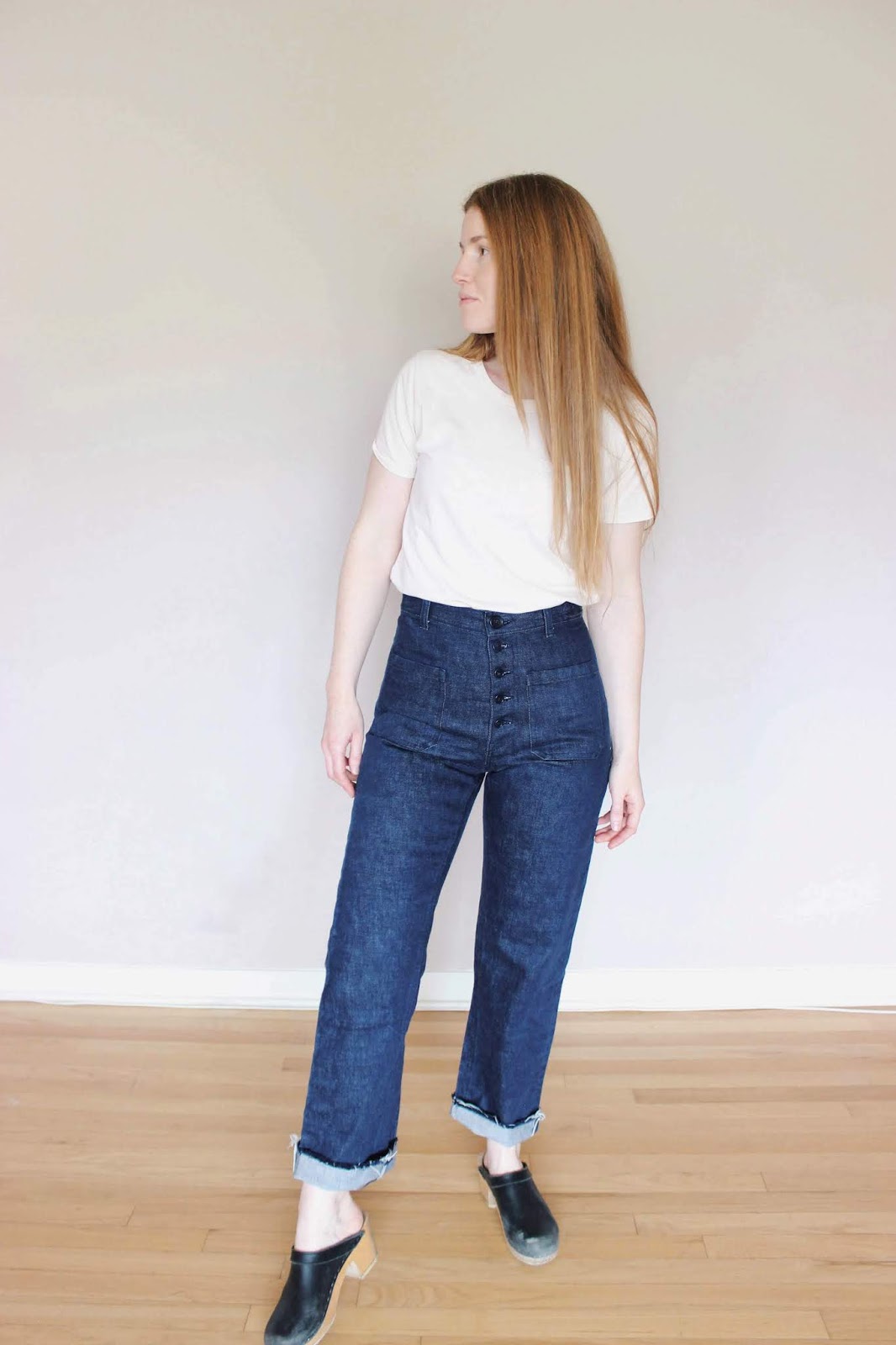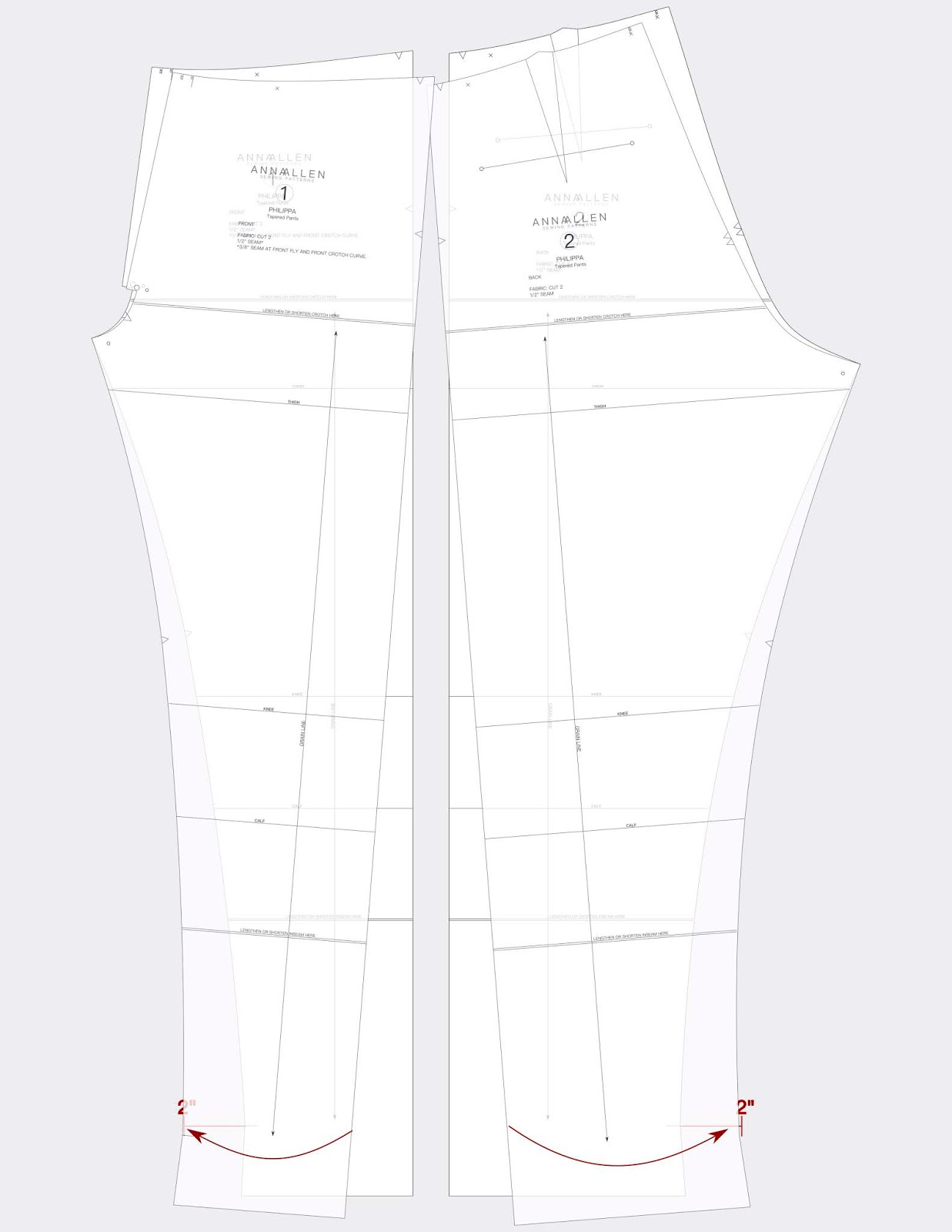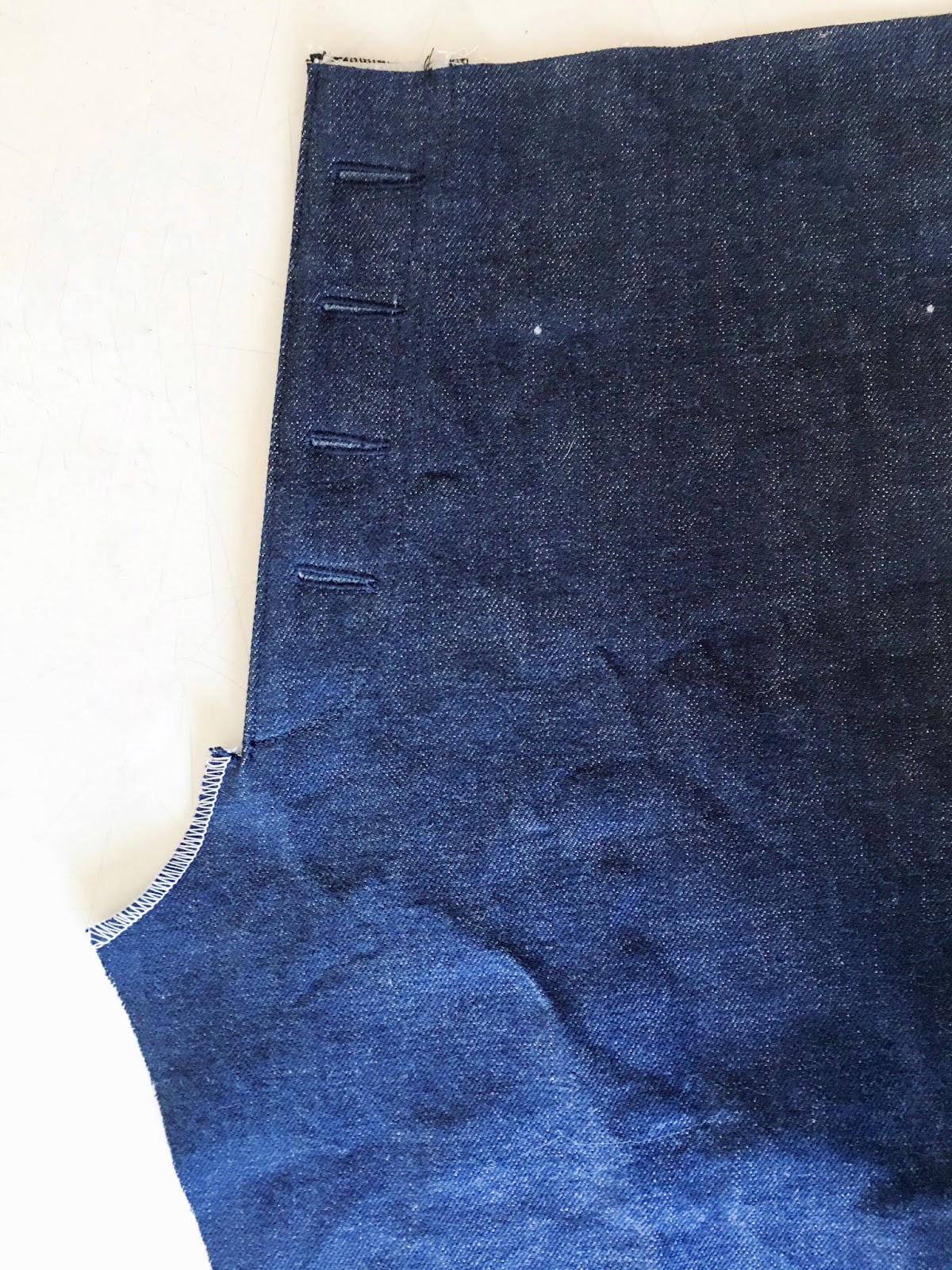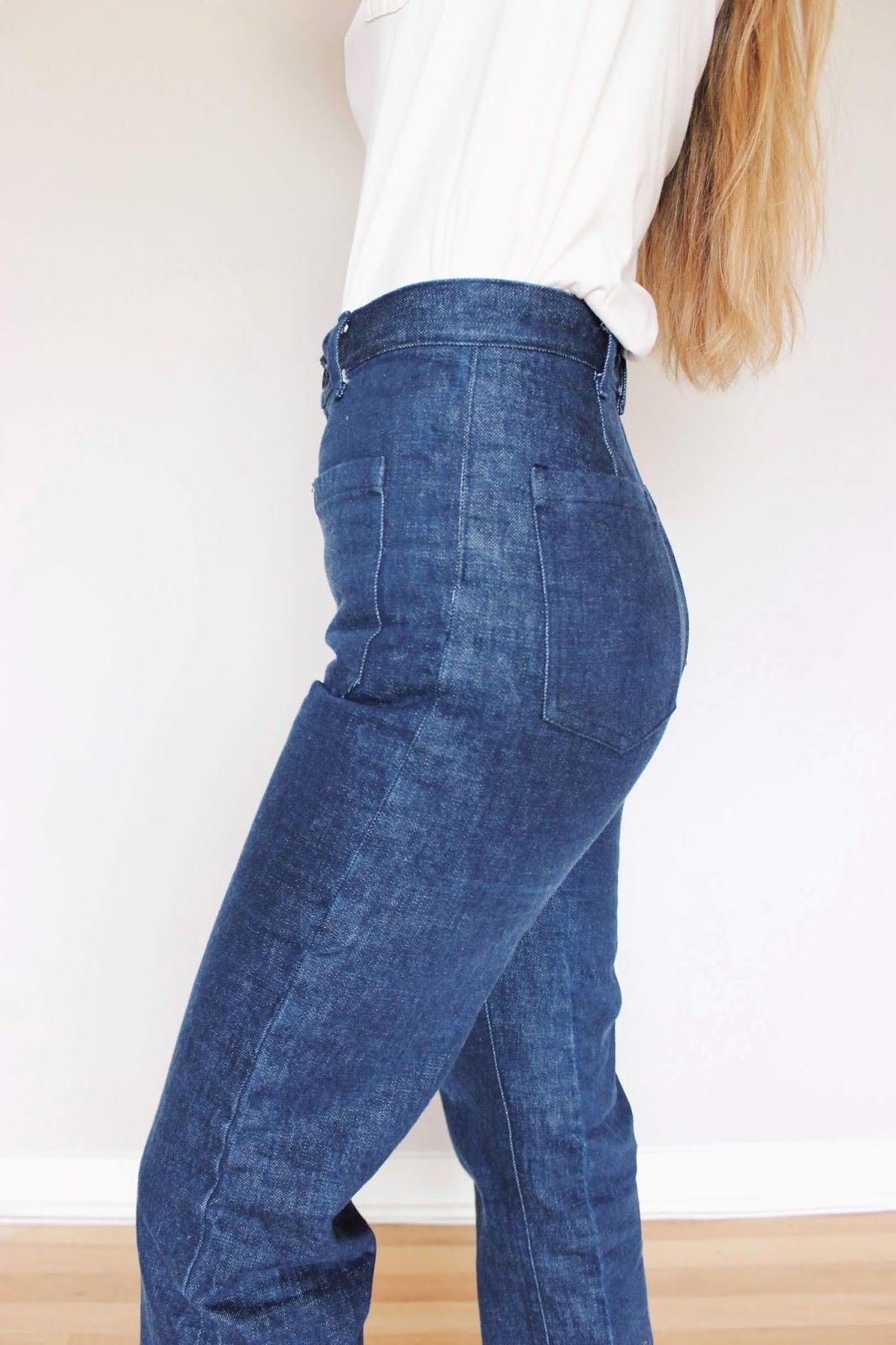I wanted a pair of straight leg Philippa pants for summertime, so I made a simple alteration to the Philippa pants pattern for a looser fitting leg. Keep reading to find out how you can alter these tapered pants to create a straighter leg.
First determine how much wider you want your pants to be. I decided I wanted to add about 4” total on each leg, so I divided that number in half and added 2” to the inseam width at the hemline on both the front and back legs.
Measure 2" to the outside of the inseam hemline at both front and back pants and draw a line.
Next you need to draw a line starting from the 2" mark at the hem to the crotch. This isn't a straight line, but more of a curved line, tapered in at the crotch. To achieve this, you can pivot the pattern at the crotch point and swing the inseam out to match the hemline to the 2” mark. Trace the new inseam line. You may need to straighten the line up a bit more from knee to hem so it’s not as curved at the lower leg. But the pivot method helps give you just enough curve at the thigh without using a fancy ruler.
Pivot the pattern at the crotch point and swing the inseam out to match the hemline to the 2” mark.
Trace the new inseam line.
I also sewed the buttonholes directly onto the front pants fly, eliminating the button placket entirely. Instead of adding the fusible interfacing on the fly facing, I added a slightly heavier weight interfacing right onto the underside of the fly front. (So when you are cutting out the fly interfacing, cut it with glue side up.) I also found I needed to trim the outside edge of the interfacing about ⅛” so it didn’t show under the fly facing. The facing makes this area extra strong so the fly doesn't ripple as much when you button it. The heavier interfacing also helps if you are using a lighter weight fabric. You could interface both the fly facing and directly on the underside of the pants fly, as I have just described if you are using a lighter weight fabric. I did not interface both pieces for my pair because I used a pretty stiff denim.
Interfacing applied directly to the underside of the pants front.
Buttonholes sewn directly onto the left pants front after attaching the fly facing.
For fun I added front and back patch pockets for a
vintage sailor jeans look. I created a
free pdf pattern for the patch pockets if you would like to recreate this style (which you could also use for the Persephone pants).
Click on the photo above to download the free Sailor Jeans Pocket PDF pattern.
The front and back pockets are parallel with each other (lining up at the top edge). On my size 4 pair, both front and back pockets are located approximately 3 1/4” down from the top edge. The front pockets are 2 1/4" from center front edge and the back pockets are about 1 1/2" from center back. Keep in mind the location of the pockets will vary from person to person. You can use the back pocket placement on the Philippa pants pattern to help you determine where the back pockets should go and then line up the front pockets with the back pockets so they are parallel with each other. I made my back pockets less angled and more straight by shifting the center back edge of the pocket placement up about ½”.
Pivot the inner (cb) pocket placement edge up approximately 1/2" to straighten the back pockets.
I recommend waiting to sew the pockets until the end, so you can try on your pants and figure out exactly where you want your pockets to go. I had to rip out the front pockets and re-sew them because they were way too far apart and looked all wrong! Learn from my mistakes!
Belt carriers/loops: I sewed them slightly wider, about 1/8" wider and about 1/2" shorter (3" long). Instead of sewing the loops into the waistband seam, I folded the edges under and sewed them directly onto the pants with bar-tacks on the top and bottom. The three loops in the back are placed on the back darts and center back seam.
For this pair I decided not to use any fancy thread, but instead I just used matching navy thread and I really love this look! I'm still trying to figure out what to do with the hem. I cut the pants with a 1" hem, but originally I just wanted a raw frayed hem at cropped length. I can't decide if I should hem them or keep them raw! I think I'll wear them cuffed with the raw hem like this for a while longer before I decide.
I hope this little tutorial inspires you to create different variations of pants and jeans using a basic pattern. It's easy to change just a few little details for a fresh new look! If you make this variation to the Philippa pants, I would love to see them! For photos posted to social media, feel free to tag me @annaallenclothing and/or use these hashtags in your post:
#philippastraightleg and
#philippapants





















































